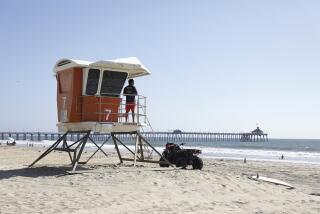Navy Terms Pollution Report on Wildlife Refuge Premature
- Share via
Reports that a federal wildlife refuge on the Seal Beach Naval Weapons Station is among the 10 most polluted in the nation are premature, a Navy official said Tuesday.
“We have only identified . . . a potential for a pollution problem at Seal Beach,” said William Venable, environmental engineer for the Navy’s Environmental Restoration Division in Port Hueneme.
“Our preliminary study based on historical records and interviews has turned up nine sites that may potentially pose a problem in the future, but we have no evidence of any immediate threat to the wildlife or the environment,” Venable said.
Venable said a contractor was about to be hired to conduct in-depth tests at the nine sites within the next month. Until those results are in, he said, “it is premature to say how serious the problem is.”
The 1,100-acre salt marsh on the Seal Beach base was named this week in a U.S. Fish and Wildlife Service report as one of the 10 most polluted refuges in the country.
Originally, a biologist for the agency’s western region said that not enough was known about possible pollution at the Seal Beach refuge to regard it as a serious problem when he provided the information for the report.
Its status was upgraded by higher-ups in Washington from one where possible contamination exists to one requiring corrective action on the basis of the Navy’s preliminary report of past practices at the base, regional biologist Carey Smith said Tuesday.
Smith, who works for the western region headquarters in Portland, Ore., said that when he was gathering data for the agency report, Navy officials told him that information about contamination at the base was classified.
Venable said Tuesday that the Navy report released last February identified five sites inside the salt marsh and four sites elsewhere on the base as needing follow-up study.
An old landfill inside the refuge was used between 1968 and 1970 to dump oil from electrical transformers.
Records also indicate that different sites in the refuge were used for the dumping of battery acids, solvents and paint cans and oil-contaminated waste water. On an island where oil was drilled, drill cuttings were buried in unlined, man-made lagoons in the mid-1950s.
More to Read
Sign up for Essential California
The most important California stories and recommendations in your inbox every morning.
You may occasionally receive promotional content from the Los Angeles Times.












